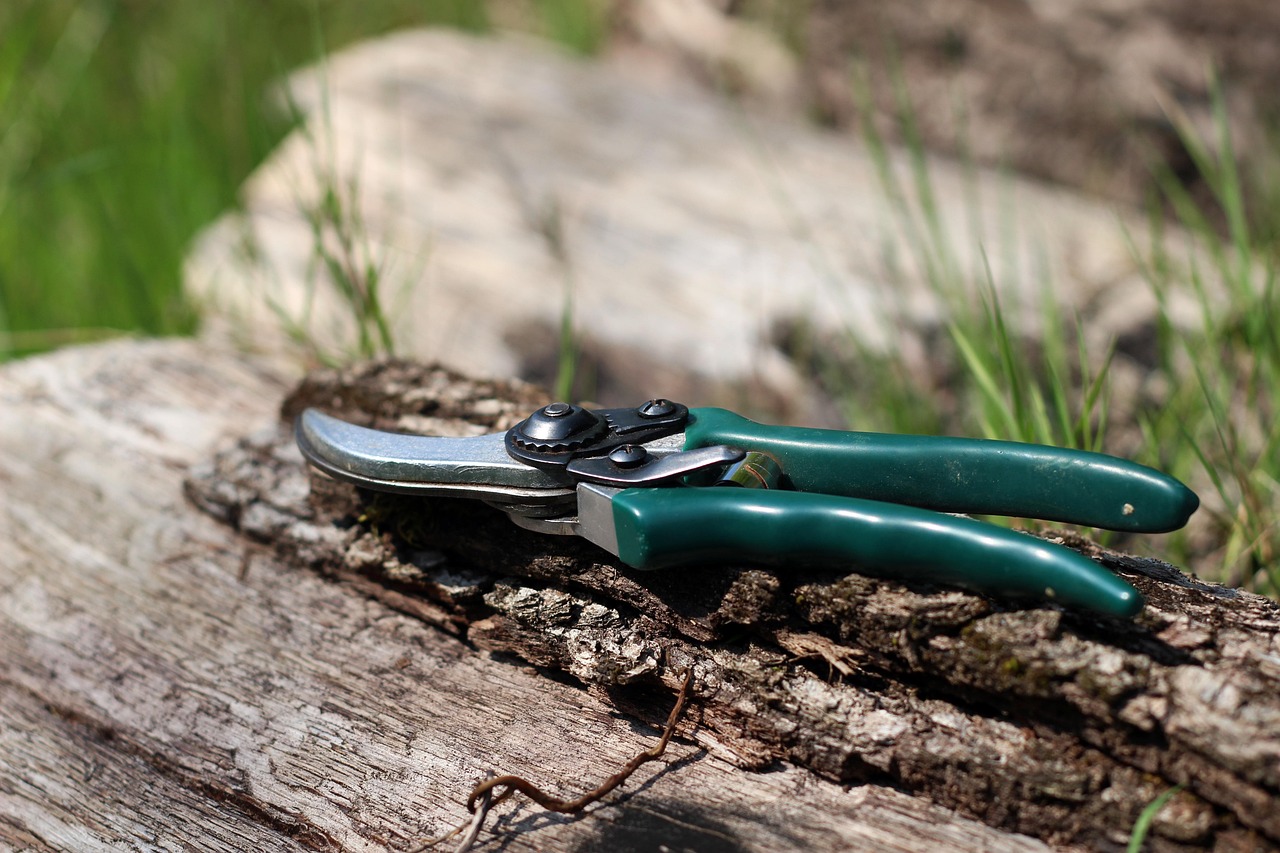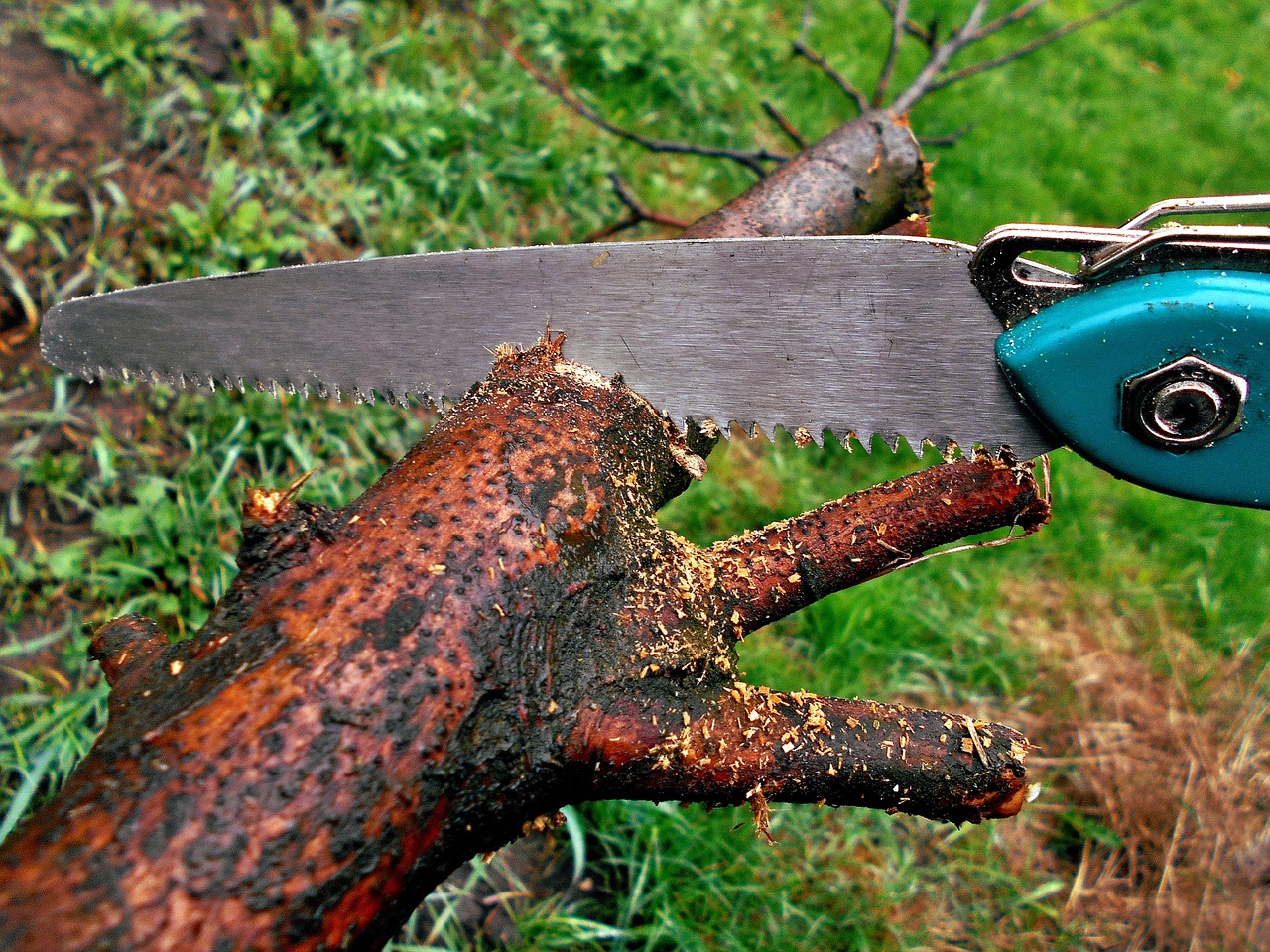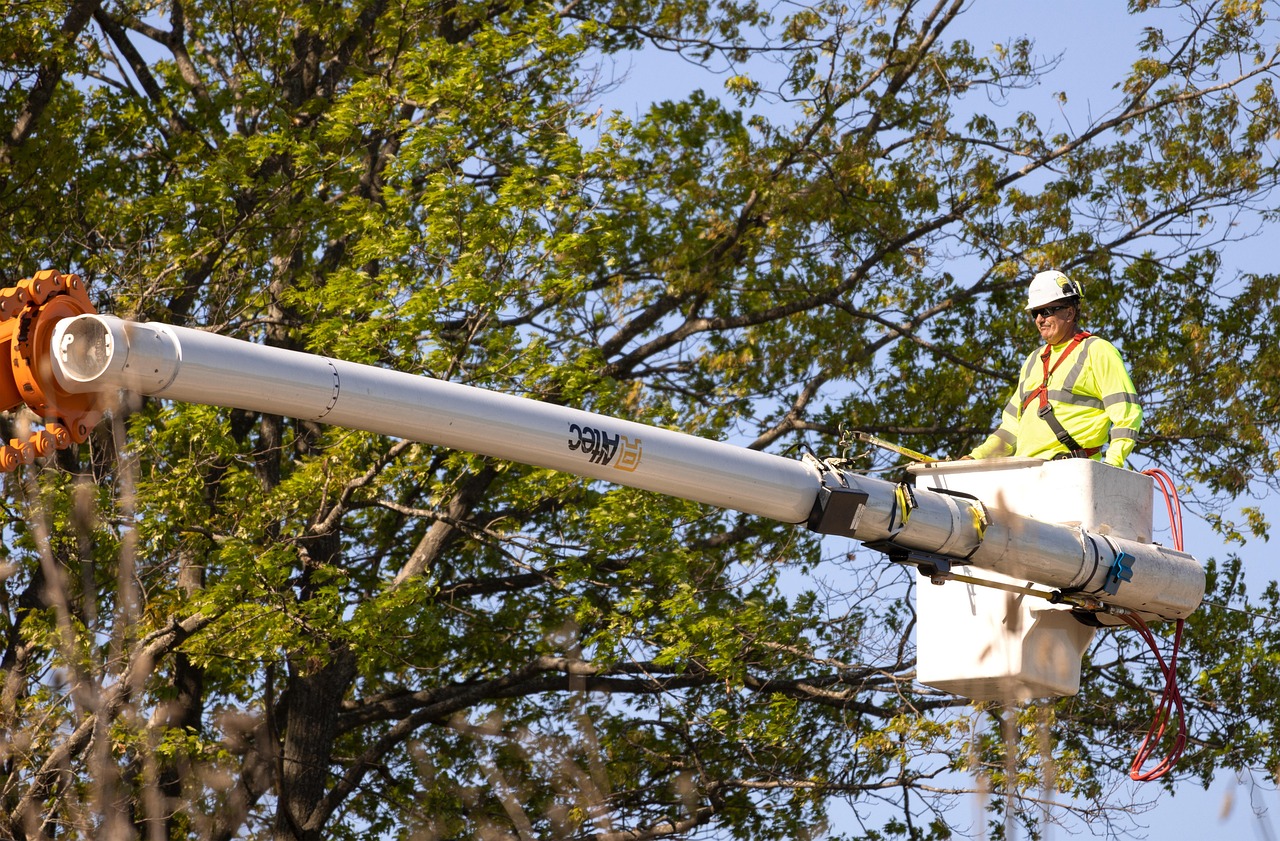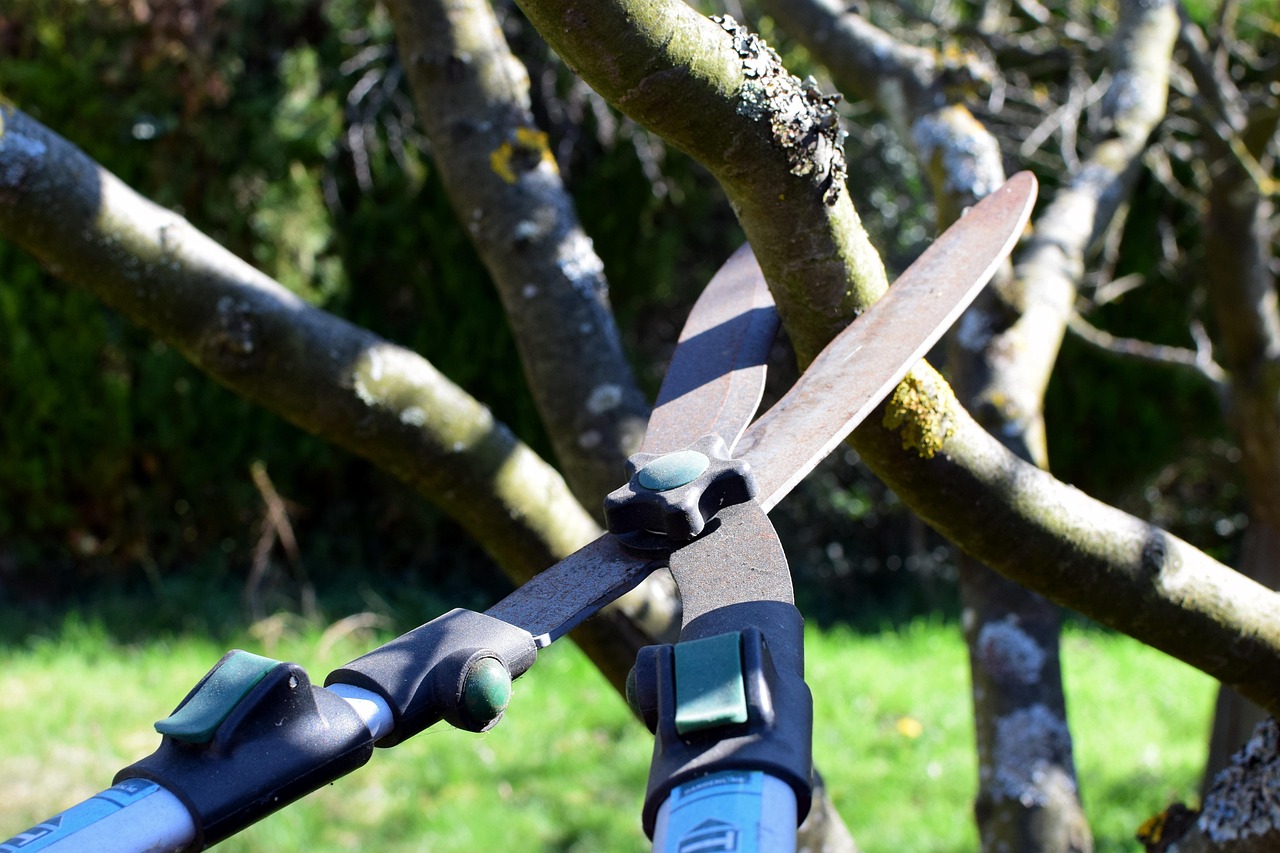Pruning trees can significantly enhance wildlife habitats by promoting healthy growth, increasing food availability, and creating nesting sites for various species. Proper pruning techniques help maintain tree structure, allowing for better light penetration and airflow, which benefits both the tree and the wildlife it supports.
Trees are vital components of ecosystems. They provide shelter, food, and nesting sites for a wide variety of wildlife. However, as trees grow, they may become overgrown or develop dead branches that can hinder their overall health and the health of surrounding wildlife. Pruning is an essential practice that not only maintains the vitality of trees but also enhances their ability to support diverse wildlife populations.

Understanding the relationship between trees and wildlife is crucial. Healthy trees can produce more fruits, nuts, and flowers, which serve as food sources for birds, insects, and mammals. Additionally, well-pruned trees allow for better sunlight and airflow, which can lead to stronger trees that are more resilient to pests and diseases.
The Importance of Pruning for Wildlife
Pruning is not merely about aesthetics; it is a necessary practice for promoting biodiversity. By removing dead or diseased branches, you can prevent the spread of disease and create a safer environment for wildlife. Furthermore, strategic pruning can shape trees in ways that enhance their habitat value.
Here are some key benefits of pruning trees for wildlife habitats:

- Improved Health: Pruning eliminates dead or diseased branches, allowing the tree to focus its energy on healthy growth.
- Increased Food Sources: Fruit-bearing trees benefit from pruning as it encourages fruit production through better light exposure.
- Nesting Opportunities: Pruned trees can create more open spaces for birds and other animals to nest safely.
- Enhanced Habitat Complexity: Varied tree structures provide different levels of habitat complexity, supporting diverse species.
Moreover, certain tree species are particularly beneficial for specific types of wildlife. For instance, oak trees support a high number of insects, which are essential food sources for many bird species. By carefully selecting which trees to prune and how to prune them, you can cater to the needs of local wildlife.
Best Practices for Pruning Trees
To effectively prune trees for wildlife habitats, follow these best practices:
- Assess Tree Health: Before pruning, evaluate the overall health of the tree. Look for signs of disease or decay.
- Choose the Right Time: Late winter or early spring is often ideal for pruning because trees are still dormant but before new growth begins.
- Use Proper Tools: Ensure you have sharp and clean tools to make clean cuts. This helps prevent injury to the tree.
- Make Strategic Cuts: Focus on removing dead wood and branches that cross each other. This promotes better airflow and light penetration.
The timing and method of pruning can greatly affect wildlife. For example, birds often nest in spring. Therefore, pruning during late winter minimizes disturbance to nesting birds. If you’re unsure about when or how to prune certain species, consider consulting with a local arborist or wildlife expert for guidance.

Common Tree Species to Prune for Wildlife
Different tree species support different types of wildlife. Here’s a list of common trees that benefit from pruning:
| Tree Species | Wildlife Benefits |
|---|---|
| Oak | Supports numerous insects and birds. |
| Pine | Shelter and nesting sites for birds. |
| Apple | Provides fruits for birds and mammals. |
| Maple | Nectar source for pollinators in spring. |
Pruning these trees not only enhances their growth but also ensures that they continue to provide essential resources for local wildlife. By understanding the ecological roles of different tree species, you can make informed decisions about how to manage your landscape for the benefit of both trees and wildlife.
Ultimately, pruning is a valuable tool in creating a balanced ecosystem. It requires knowledge, patience, and a commitment to fostering a healthy environment. Through careful planning and execution, you can transform your yard into a thriving habitat that supports a wide array of wildlife while maintaining beautiful trees.

Understanding Tree Pruning Techniques
Tree pruning is an art and a science. To effectively enhance wildlife habitats, it is crucial to understand different pruning techniques and their implications for tree health and wildlife support. Each technique serves specific purposes and can drastically affect the tree’s structure and the ecosystem it supports.
Types of Pruning Techniques
Different pruning techniques can be applied based on the goals of the pruning. Here are some common types:
- Thinning: This technique involves selectively removing branches to increase light penetration and air circulation. Thinning promotes healthier growth and encourages the development of new shoots.
- Heading: Heading cuts shorten branches, stimulating growth of new shoots from the cut area. This method can be useful for shaping trees but should be used judiciously to avoid stressing the tree.
- Reduction: Reduction pruning aims to decrease the height or spread of a tree while maintaining its natural shape. This technique is often applied to trees that have outgrown their space or pose risks to nearby structures.
- Cleaning: This involves removing dead, diseased, or damaged branches. Cleaning enhances tree health and reduces the risk of pest infestations.
Each technique has its own benefits for wildlife. For example, thinning can create more open spaces that allow birds to navigate more easily, while cleaning ensures that trees remain healthy and can continue to provide food and shelter.
Seasonal Considerations for Pruning
The timing of pruning is critical for both the health of the tree and the safety of local wildlife. Different seasons offer various advantages:
Spring
Spring is typically the best time for pruning many species, as trees are actively growing. This timing allows for rapid healing of cuts, minimizing the risk of disease. However, be cautious of nesting birds, as many species begin nesting in early spring.
Summer
Summer pruning can be beneficial for certain species. This is a good time to remove any unwanted growth. However, be aware that pruning during this time can stress trees due to heat and drought conditions.
Fall
Fall is often less recommended for heavy pruning, as trees are preparing for winter dormancy. Light pruning or cleaning can be done, but significant cuts may leave trees vulnerable to winter damage.
Winter
Winter is generally considered the optimal time for pruning deciduous trees. During this dormant period, trees are less susceptible to pests and diseases, making it easier to assess their structure without foliage obscuring your view.
Impact of Pruning on Ecosystem Dynamics
The practice of pruning not only affects individual trees but also has broader implications for the surrounding ecosystem. By understanding these dynamics, you can make better decisions for wildlife conservation.
Creating Habitat Diversity
Diverse habitats support a wider range of species. Pruning can help create varied structures within a landscape by maintaining a mix of tree ages and types. This diversity encourages different wildlife species to thrive. For instance:
- Deciduous Trees: These trees provide seasonal food sources as they produce fruits and nuts.
- Evergreen Trees: They offer year-round shelter and nesting sites for birds.
- Mature Trees: Older trees create cavities that are essential for many bird species and small mammals.
Supporting Pollinators
Pruning can also impact pollinator populations. By allowing more sunlight to reach flowering plants beneath trees, you can enhance blooming periods and improve food availability for bees and butterflies. Consider the following:
- Selective Pruning: Focus on flowers that attract pollinators when pruning flowering trees.
- Nectar Sources: Maintain shrubs and flowering plants around trees to support pollinator habitats.
Tools for Effective Pruning
Having the right tools is essential for effective tree pruning. Using appropriate equipment not only makes the job easier but also helps ensure that cuts are clean, which is critical for tree health. Here are some commonly used tools:
| Tool | Description |
|---|---|
| Hand Pruners | Ideal for small branches and precise cuts. |
| Loppers | Great for cutting larger branches that hand pruners cannot handle. |
| Saws | Used for cutting thicker branches; ensure you have proper pruning saws for larger jobs. |
| Pole Saw | A tool for reaching higher branches without climbing. |
Always ensure your tools are sharp and clean before use. Proper maintenance of tools not only prolongs their lifespan but also minimizes potential harm to both the tree and yourself during the pruning process.
Your approach to pruning can have lasting effects on wildlife habitats. By understanding techniques, seasonal timing, ecosystem dynamics, and using the right tools, you can significantly contribute to enhancing habitats while maintaining healthy trees.
Recognizing Signs of Tree Health Issues
Before engaging in pruning, it is essential to recognize the signs of tree health issues. An unhealthy tree can not only affect its growth but also impact the wildlife that relies on it. Identifying potential problems early can lead to better management and care.
Common Tree Diseases
Understanding the diseases that can affect trees is crucial for effective pruning. Here are some common tree diseases to look for:
- Root Rot: This condition is often caused by overwatering or poor drainage, leading to decaying roots. Signs include yellowing leaves and stunted growth.
- Powdery Mildew: A fungal disease that appears as a white powdery coating on leaves. It thrives in warm, dry conditions and can weaken the tree over time.
- Canker Diseases: These are localized areas of dead tissue on stems or branches, often caused by fungi. Cankers can girdle stems, leading to dieback.
- Leaf Spot: A condition where spots appear on leaves, often indicating a fungal or bacterial infection. Severe cases can lead to leaf drop.
When pruning, it is important to assess the overall health of the tree. If you notice any of these signs, consider consulting a professional arborist who can recommend appropriate treatments and pruning strategies.
Pest Infestations
Pests can also pose significant threats to tree health. Common pests include:
- Aphids: Small insects that feed on tree sap, leading to yellowing leaves and stunted growth.
- Caterpillars: Larvae of moths and butterflies that can defoliate trees quickly.
- Scale Insects: These pests attach themselves to branches and leaves, sucking juices and weakening the tree.
- Bark Beetles: These insects bore into the bark and can cause significant damage if not controlled.
Detecting pest infestations early allows for timely intervention, which can minimize damage and ensure the tree continues to provide habitat for wildlife.
The Role of Native Plants in Supporting Wildlife
In addition to pruning trees, incorporating native plants into your landscape can significantly enhance wildlife habitats. Native plants are adapted to the local climate and soil conditions, making them easier to maintain while providing essential resources for local fauna.
Benefits of Native Plants
Native plants offer numerous advantages:
- Food Sources: Many native plants produce fruits, seeds, and nectar that attract various wildlife species.
- Shelter: Dense native vegetation provides cover for birds, small mammals, and insects, helping them avoid predators.
- Pest Control: Native plants support beneficial insects that can help control pest populations naturally.
- Diversity: A mix of native plants creates a more complex ecosystem, supporting a wider variety of species.
Selecting Native Plants
When choosing native plants for your landscape, consider the following factors:
- Local Climate: Select plants that are well-suited to your area’s climate conditions.
- Soil Type: Different plants thrive in various soil types, so it’s essential to choose those that match your soil’s characteristics.
- Plant Height and Spread: Consider how tall and wide plants will grow to ensure they fit well within your landscape design.
By incorporating a variety of native plants around pruned trees, you create a lush environment that attracts birds, pollinators, and other wildlife.
Creating Wildlife-Friendly Landscapes
Designing a landscape that supports wildlife requires thoughtful planning. Here are some strategies to create a wildlife-friendly environment:
Layered Planting
A layered planting approach mimics natural ecosystems. By planting trees, shrubs, and ground cover together, you create layers of habitat that support different species. Consider the following layers:
- Treetop Layer: Tall trees provide nesting sites for larger birds and shade for understory plants.
- Shrub Layer: Mid-sized shrubs offer shelter for smaller wildlife and food sources like berries.
- Ground Cover Layer: Low-growing plants help prevent soil erosion and provide habitat for insects and small mammals.
Water Sources
Providing water sources is vital for supporting wildlife. Consider adding features such as:
- Bird Baths: These provide drinking water for birds and other small animals.
- Ponds: A small pond can attract various species, including frogs, birds, and beneficial insects.
- Splash Pads: Shallow areas with moving water can support aquatic insects and attract birds.
By incorporating these elements into your landscape design, you create a welcoming environment for wildlife while enhancing the beauty of your outdoor space.
Challenges in Pruning for Wildlife Habitats
While pruning provides many benefits for tree health and wildlife habitats, there are challenges to consider. Awareness of these challenges allows you to navigate them effectively.
Timing Challenges
The best timing for pruning may conflict with wildlife activity. For instance, many birds nest in spring when trees are typically pruned. To mitigate this, consider:
- Nesting Surveys: Before pruning in spring, survey trees for active nests. Delay pruning until after nesting season if necessary.
- Selective Pruning: Focus on areas of the tree that are less likely to disturb nesting wildlife.
Environmental Impact
Over-pruning or improper techniques can harm trees and the wildlife they support. To minimize environmental impact:
- Avoid Heavy Cuts: Excessive cutting can stress trees and reduce their ability to support wildlife.
- Educate Yourself: Learn about species-specific needs and appropriate pruning techniques before starting any project.
Being informed about these challenges enables you to make responsible choices while enhancing both tree health and wildlife habitats in your landscape.
Enhancing Biodiversity Through Pruning
Pruning trees is not just a maintenance task; it is a powerful tool for enhancing biodiversity in your local environment. By intentionally managing tree growth and health, you can create habitats that support a wide range of wildlife species. This practice is especially important in urban and suburban areas, where natural habitats may be limited.
Encouraging biodiversity starts with understanding the specific needs of local wildlife. Different species rely on various types of food sources, nesting sites, and shelter. For example, while some birds prefer dense foliage for nesting, others may seek out open spaces. By using thoughtful pruning techniques, you can create a more diverse habitat that caters to the needs of various species.
Creating Habitat Corridors
Another important aspect of enhancing wildlife habitats through pruning is the creation of habitat corridors. These corridors connect separate habitats, allowing wildlife to move freely between them. This connectivity is vital for species that need to migrate for food or mating. Here are some strategies to create effective habitat corridors:
- Linking Green Spaces: Prune trees and shrubs in areas to maintain clear paths that connect parks or wooded areas.
- Planting Native Species: Include native plants along these corridors to provide food and shelter for migrating wildlife.
- Minimizing Barriers: Reduce obstacles such as fences or dense thickets that may hinder animal movement.
By creating these corridors, you contribute to a healthier ecosystem, allowing animals to thrive in their natural settings.
Community Involvement and Education
Engaging with your community is essential for promoting awareness about the benefits of pruning trees for wildlife habitats. Community involvement can take many forms, such as:
- Workshops: Organize workshops on tree pruning techniques and the importance of habitat conservation.
- Volunteer Programs: Create volunteer opportunities for local residents to participate in tree care and wildlife monitoring efforts.
- Educational Campaigns: Share information through social media or community newsletters about the relationship between tree health and wildlife support.
By fostering a sense of community responsibility toward local wildlife habitats, you can help create a culture of conservation that resonates with others.
Final Thoughts
Pruning trees effectively can significantly enhance wildlife habitats. By understanding the various pruning techniques, recognizing signs of tree health issues, and considering the impact on local ecosystems, you position yourself as a steward of the environment. Implementing best practices in tree care not only promotes healthier trees but also supports diverse wildlife populations.
It is crucial to remember the broader implications of your actions. Each cut made in a tree should be purposeful and well-thought-out, taking into account the potential impact on both tree health and the wildlife it supports. Educating yourself and your community about these practices can lead to more sustainable landscapes that benefit all forms of life.
The integration of native plants, the establishment of habitat corridors, and active community engagement are key components in creating thriving ecosystems. As you embark on your tree pruning journey, consider how each decision can contribute to the larger goal of fostering a vibrant and diverse wildlife habitat.
In conclusion, tree pruning is more than just a maintenance chore; it is a meaningful practice that can enrich our environment and enhance biodiversity. By committing to responsible tree care and wildlife conservation efforts, we can build healthier ecosystems for future generations.
